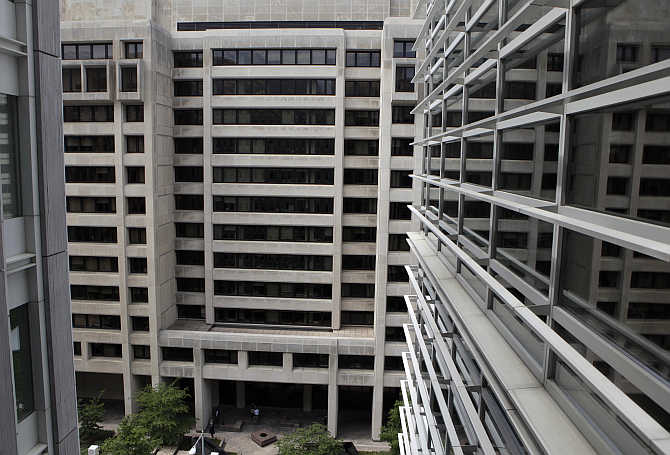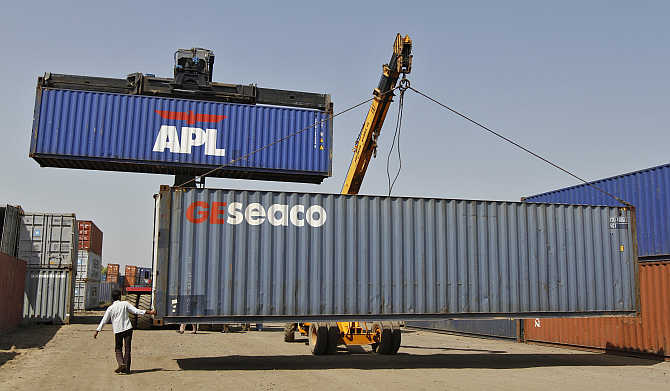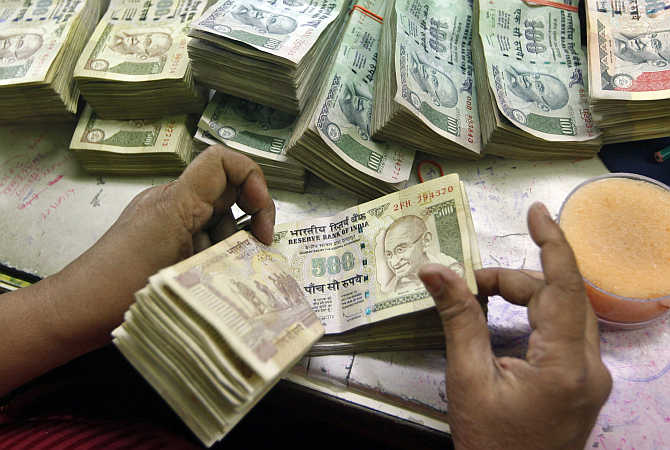
But an unimpressed finance minister plays King Canute.
Devaluation became a dirty word in India in 1966. In June of that year, Indira Gandhi devalued the rupee by a massive 57.4 per cent - and was greeted with a storm of criticism in Parliament and in the media. India had been in desperate need of foreign currency, and the World Bank (which used to coordinate aid from countries, in addition to giving its own loans) had made it clear that nothing would be forthcoming without a substantial rupee devaluation.
The issue had been discussed through 1965, and if you go by B K Nehru’s account (in Nice Guys Finish Second, devaluation had been decided on by Lal Bahadur Shastri before he went to Tashkent in January 1966; indeed, the International Monetary Fund had even been told the date of the announcement (June 1966). The previous December, Shastri had eased out his finance minister, T T Krishnamachari, for opposing devaluation.
But when devaluation was eventually announced, the media and Parliament were bitterly critical - among other things, for it having been dictated from Washington. The World Bank made matters worse by falling short on its commitment to quickly organise more aid, and soon the new prime minister lost faith in the whole business and in Western promises - factors that may have contributed to her subsequent leftward shift.
...

Meanwhile, a second successive drought added to macroeconomic difficulties, while contradictory export-import policies partly counteracted the effect of the devaluation, which came to be seen as a failure. This much is popular history. What is usually ignored in its telling is the medium-term effect that the devaluation had on the economy.
In the 15 years to 1965-66, Indian exports had grown by a modest 20 per cent, while imports (despite being artificially compressed through controls) had shot up by 131.3 per cent. Balanced trade flows in 1950-51 had given way to a massive trade deficit. After the devaluation, the story changed direction.
Exports rose faster than before, while imports actually shrank. By 1970-71, therefore, the trade deficit had collapsed to barely a 10th of what it had been just five years earlier. The devaluation had been required, and had worked. Aid flows tell their own story. Aid had been cut off at the time of the 1965 war with Pakistan, but resumed, though with delays and in smaller quantities than promised.
Yet, the inflow was Rs 819 crore (Rs 8.19 billion) in 1965, none in 1966, and back to Rs 863 crore (Rs 8.63 billion) in 1967. Also discredited were the theories that had been put forward about why the devaluation would not work: structural constraints held back India’s exports and devaluation would not change that; imports were of essential items that could not be compressed; the result of devaluation would be import-driven inflation; and so on.
...

But as the numbers show, import compression happened (presumably domestic production substituted) and export growth picked up as producers responded to the new price signals. Better known is the history of the devaluation of the early 1990s: from Rs 19.64 to the dollar in March 1991 to Rs 31.23 a year later (a drop of 59 per cent).
The consequence was that, by 1993-94, the trade deficit had shrivelled to barely one-sixth of its size three years earlier. And the non-oil trade balance had moved from a deficit to a massive surplus. Consider how far removed these successful policy responses to trade deficits are, from what is being done now: more exchange controls, new import curbs, higher tariffs, tighter monetary policy, more foreign borrowings… virtually an announcement a week by a finance minister and team who are busy playing King Canute. But the rupee is as heedless as the tide around Canute’s chair.